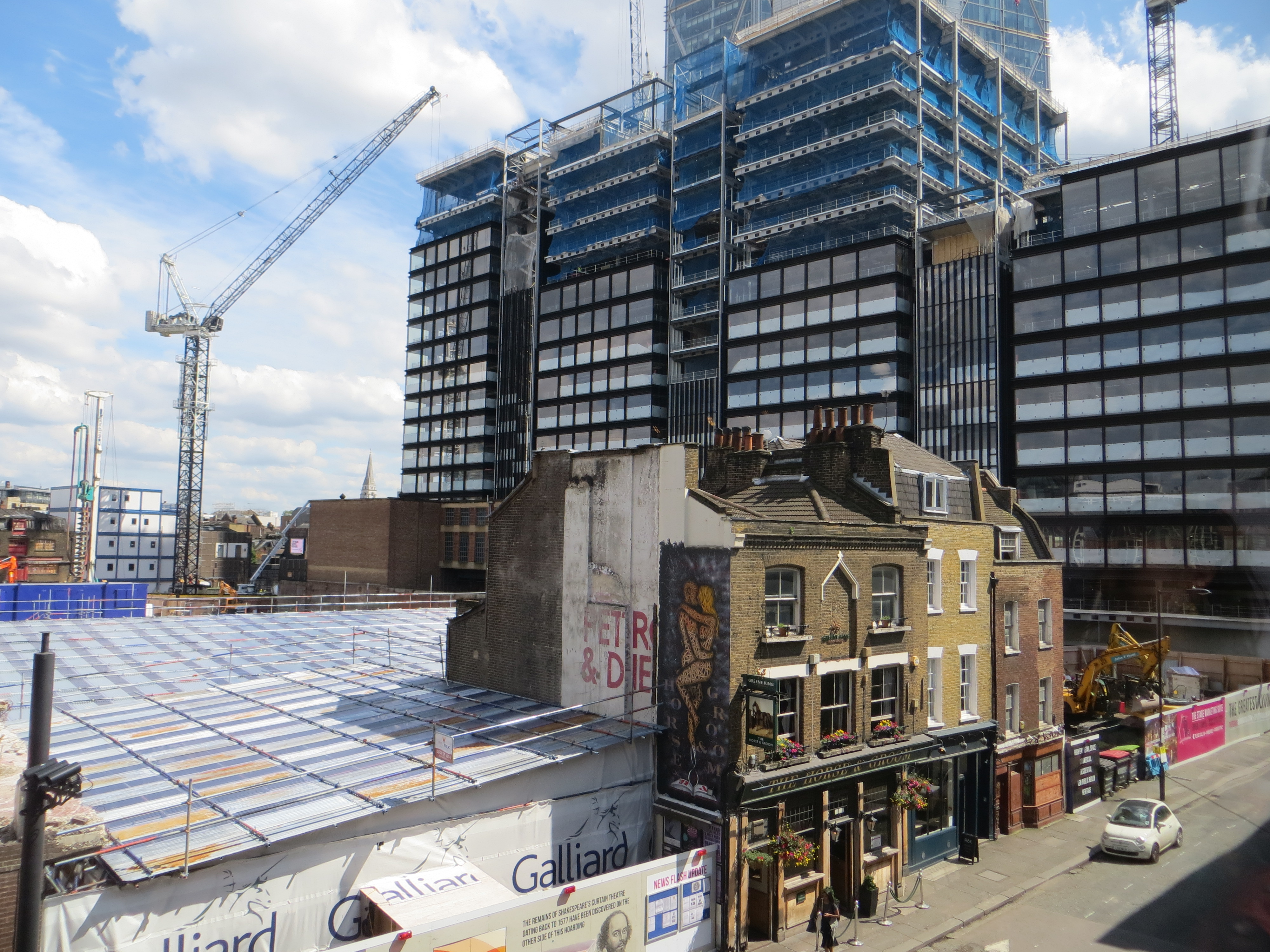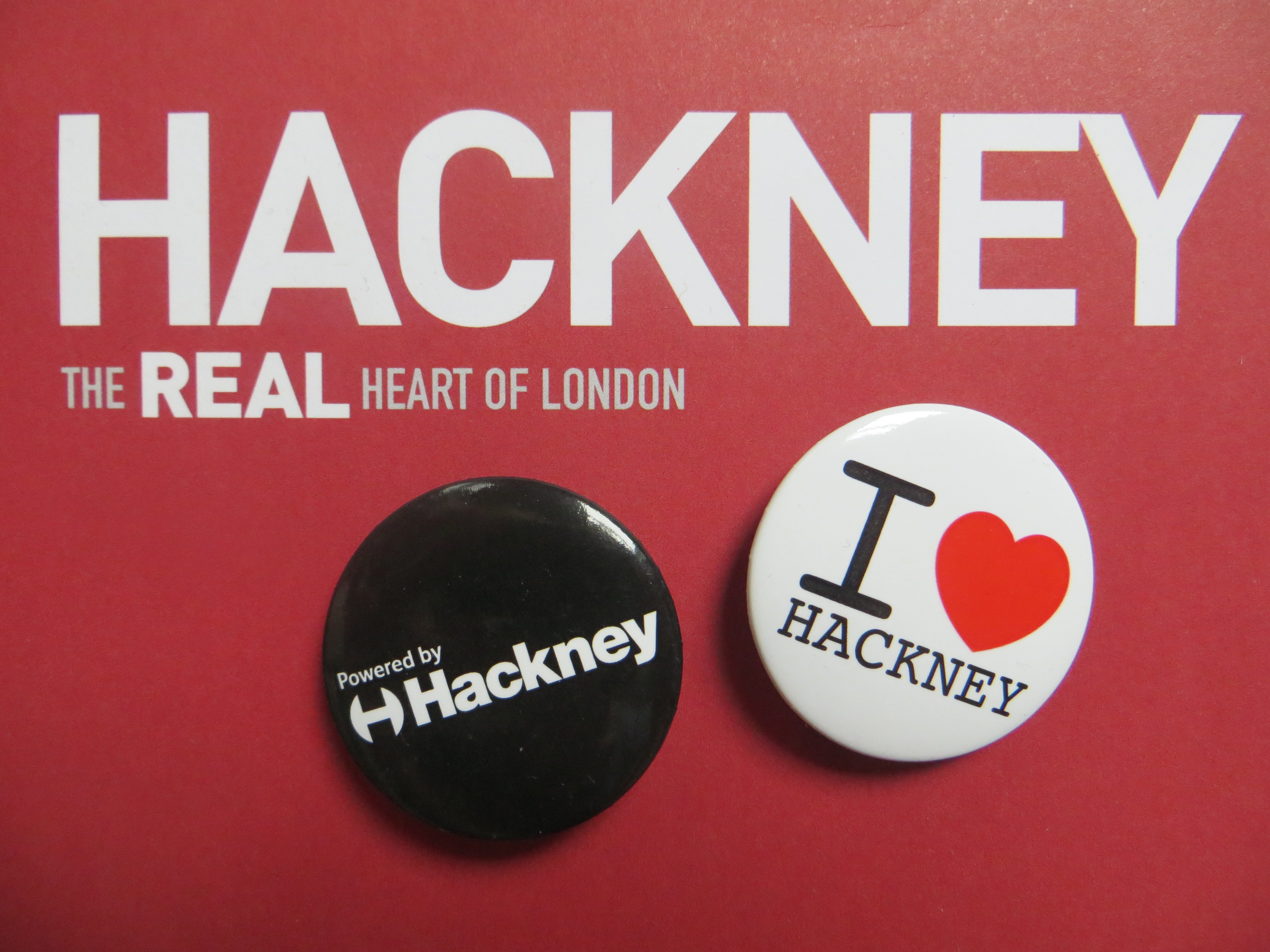 By Morwen Johnson
By Morwen Johnson
A traditional pub, standing alone in the midst of a massive development site in East London. The photo above, taken at the end of June, seems to sum up dramatic changes that are being replicated all across London as regeneration transforms many Boroughs. Social and community regeneration, however, does not inevitably follow from investment in commercial property development. And ensuring that local communities benefit, and are not displaced or excluded by processes of gentrification, can be a tough balancing act.
I recently went on a study tour within Hackney, organised as part of the RTPI Convention in June, to understand how the council’s planning and regeneration team have been working to attract investment into the area and tying this in to employment support and small business growth.
Rapid economic growth but continuing deprivation
A number of high profile major site developments are underway in Hackney, including multiple hotels and the new Amazon HQ. This has gone hand-in-hand with its emergence in the last few years as an attractive location for start-ups and entrepreneurs.
Hackney experienced a business growth rate of 40% between 2004 and 2012, 17% higher than London as a whole. The population of the Borough has also grown from approximately 265,000 in 2006 to an estimated 310,000 in 2015. A report from Tech City published last month also highlighted the importance of the key sectors of creative, technology and business services in the local economy – they make up 37% of all employment in Hackney and 54% of its 11,000 businesses.
It’s worth noting, however, that this economic success has come at a time when Hackney still has some of the highest levels of deprivation and poverty in London. For example, in 2016, 30% of nursery and primary school pupils are eligible for and claiming free school meals, rising to 33% at secondary level (London Datastore).
Vibrancy of the area at risk?
The improved perception of the area, while welcome, is pushing up property and rental prices. And now, as start-ups and small businesses risk being priced out of Hackney, it is important for the area to retain the ability to host start-ups. One solution is ‘meanwhile use’ – the temporary use of vacant buildings or sites, especially for community projects.
Hackney council has engaged with local developers and property partners to create innovative and cost-effective spaces on a temporary basis to promote local business, employment and culture. Hackney House on Curtain Road is just one example – the building provides a café and bar area, as well as exhibition and meeting space for hire. Wi-fi and desk space is available for not-for-profit organisations and start-ups to use, and regular events encourage business networking. The project won the Best Town Centre project at the London Planning Awards in February 2016.
The council suggests that while it’s important to keep businesses in the area, the core aim should “be to keep projects innovative and exciting”. Some churn is inevitable and councils should “extend both a platform and an open mind to its current local business communities”.
Ways into work
Another example of collaboration which has delivered cost effective assets to support the local community is The Opportunity Hub on Pitfield Street. The council has been working to develop its role as a broker between the private sector and community sector to create jobs and training for local people. The Opportunity Hub sits next to a large housing estate and research showed that nearly a quarter of residents local to the Hub had never used the internet.
Previously a community centre that was only being used for two hours a week, the building has been redesigned to offer an antithesis to job centres. As well as having space for training or employer recruitment sessions, there is free hot-desking space. A team of information and guidance advisors are available and focus on getting local people ‘job-ready’. They also engage with local businesses to promote apprenticeships. Touchingly, the local group of women who used the previous centre for afternoon bingo now use the Hub space instead.

Looking to the future
It’s clear that the council in Hackney aren’t resting on their laurels. As well as continuing to use Section 106 as a tool to ensure larger businesses moving into the area will offer jobs to local unemployed people, they are planning another Opportunity Hub in the foyer of a local library. They are also looking at new ideas to provide space for temporary uses, such as the untapped potential of over 2000 empty garages in the area.
Close relationships between planning professionals, town centre managers and the business development teams appear to have helped the council to use regeneration to benefit the local community.
Read more about Hackney’s three year framework to promote enterprise and regeneration in the Tech City Best Practice report.
Follow us on Twitter to see what developments in public and social policy are interesting our research team.
Read some of our other blogs on regeneration:
Share
Related Posts
A recent item on BBC Radio 4’s Today programme generated an unusually high number of responses from listeners. A man who had lost his job in the financial services sector at the age of 57 described his difficulty in trying ....
Tackling geographical inequalities is critical for ensuring that all parts of the country have the potential to prosper. When the UK was a member of the European Union, it was entitled to a share of funding from the EU’s structural ....
By Ian Babelon A new-old concept for proximity “Are we there yet?” Parents may patiently nod to their children’s insistent nudges on a 20-minute journey to… somewhere. Quite rightly, researchers have asked: twenty minutes to what? The answer may well ....

